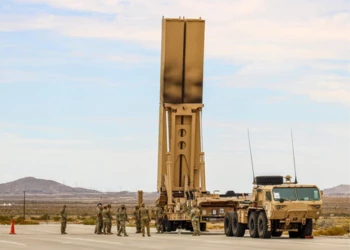DHS Efforts to Create Cutting Edge Counter Drone Technology
Add bookmark
Reports of unmanned aircraft system (UAS) sightings from pilots, law enforcement, and citizens have dramatically increased over the past two years, with the FAA now receiving nearly 100 reports each month according to the aviation authority's website. Just four months into 2024, the FAA has reported 326 incidents of drones being identified near airplanes, helicopters, and airports.
Although these unauthorized flights can result in stiff fines and criminal charges, the increased access and affordability of UAS technologies have caused an increase in incidents of illegal drone operations. Operating drones in a “No Drone Zone” can increase the risks of aerial collisions. Additionally, many drones are used for nefarious purposes such as invading privacy or smuggling contraband.
In order to reduce the risks posed by drones, the Department of Homeland Security is working to develop effective Counter-UAS (C-UAS) solutions that protect the American people and infrastructure. But before exploring DHS C-UAS efforts, it is important to understand the two avenues of which law enforcement agencies can handle drones, kinetic and non-kinetic solutions.
Kinetic vs Non-kinetic C-UAS tools
Kinetic and non-kinetic C-UAS solutions are two different approaches to detect, mitigate and confiscate unauthorized drones. Kinetic solutions involve physically disrupting or destroying the unauthorized drone. These methods typically employ forceful measures to neutralize the drone threat such as projectiles or directed-energy weapons.
On the other hand, non-kinetic solutions focus on neutralizing or mitigating the drone threat without physically destroying the drone. These methods typically aim to disrupt the drone's control or communication systems.
Each type of counter-UAS solution has its own advantages, limitations, and legal considerations. Kinetic solutions are more direct but may pose risks of collateral damage or safety hazards, while non-kinetic solutions aim to neutralize the threat more subtly and without physical destruction.
Mitigating Collateral Damages of Kinetic Solutions
In April 2023, the DHS Science & Technology Directorate (S&T) issued two requests for information to collect data from vendors regarding their C-UAS technologies. The directorate then selected the most promising responses to participate in two live demonstrations over the summer.
During the first presentation, held in July in Camp Grafton South in North Dakota, several vendors demonstrated their CUAS solution. The purpose of the first demonstrations was to test the collateral effects of kinetic mitigation systems. The systems used for the testing employed kinetic methods like projectiles, nets, photon plasma from lasers, and electromagnetic or radio waves. While the DoD has employed kinetic mitigation technologies previously, the unintended consequences of these capabilities (such as debris from intercepted drones) have not been thoroughly documented.
“The information and data collected during this event will assist S&T in understanding, measuring, and minimizing collateral effects as kinetic C-UAS mitigation solutions are applied to DHS missions,” said S&T Program Manager Andy Myers.
In late October, the University of North Dakota (UND) and Northern Plains UAS Test Site (NPUASTS) released findings from the demonstration to S&T. Although not made public, S&T has stated that finding allows the directorate to build out a methodology for how to measure the collateral effects of deploying CUAS systems.
Countering Swarms of Small UAS
The second demonstration put on by S&T was intended to evaluate non-kinetic solutions and their ability to detect, identify, track and counter swarms of small UAS. Additionally, the exercise was meant to assess technologies that can detect and mitigate drones that emit little to no radio frequency signals, also known as “dark” drones.
DHS has determined that swarms of drones have the potential to interfere with first responders as they deal with emergencies, as well as coordinate attacks on U.S. infrastructure.
In the summer of 2023 the Oklahoma State University (OSU) Unmanned Aircraft Flight Station in Stillwater, Oklahoma hosted the testing of non-kinetic C-UAS capabilities. In total six technology vendors participated in the event, three of which were U.S.-based companies.
“Two of the radars recorded impressive results in their ability to detect dark drone swarms,” said William Hatfield, counter-UAS innovation liaison for U.S. Customs and Border Protection’s (CBP) C-UAS program. “I was also impressed that an array of technologies was demonstrated that fills the need for a ‘system of systems’ approach that provides multiple detection capabilities to address every possible technology employed by drones.”
Ultimately, the demonstration gave DHS and other defense agencies the opportunity to work with industry to assess UAS threats and see the progress vendors have made in leveraging non-kinetic technologies to mitigate and detect swarms of drones.
In 2024, DHS S&T plans to continue working with industry partners to determine the best C-UAS tools for each situation.
“We are analyzing results from both events to determine future testing needs and where R&D investments should be made,” said S&T Program Manager Shawn McDonald.
This summer, DHS S&T will continue testing the impact of the kinetic C-UAS solutions tested in 2023 as well as additional technologies to assist DHS in its C-UAS efforts.






















